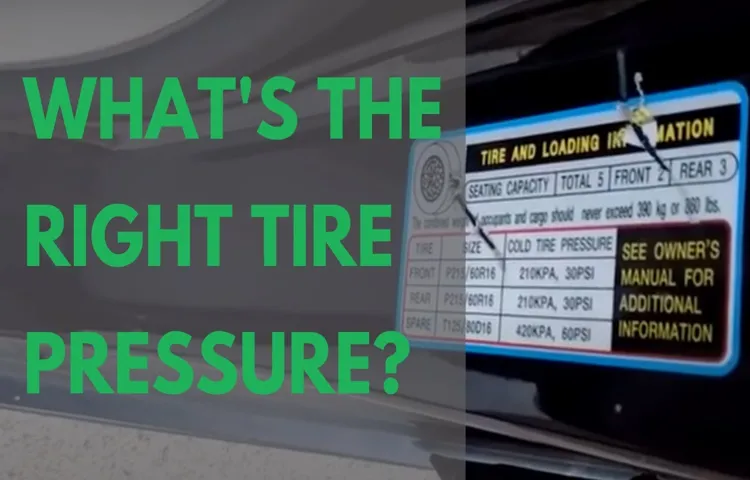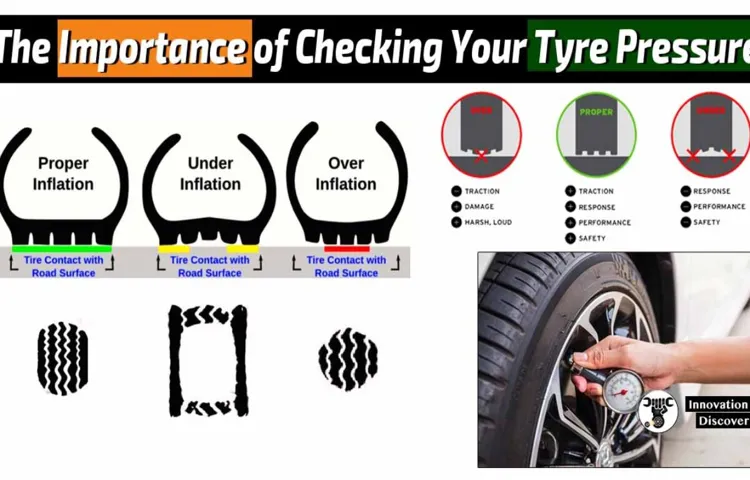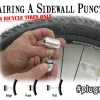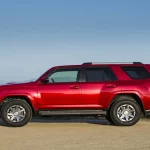If you’re a Honda Pilot owner, you know that this car is a great investment. Whether you’re using it for your family trips, road trips, or daily commutes, the Honda Pilot can handle it all. However, there’s one small aspect of car maintenance that many car owners overlook: tire pressure.
Keeping the right tire pressure is crucial for your car’s safety, performance, fuel efficiency, and overall longevity. But what is the correct tire pressure for a Honda Pilot? Is it the same for all models, or does it depend on the year and size of your tires? In this blog post, we’ll answer all these questions and more. We’ll explain how to check your tire pressure, what the recommended range is, how to adjust it, and why it matters.
We’ll also share some tips for maintaining your tires and maximizing their lifespan. By the end of this post, you’ll be able to confidently drive your Honda Pilot with the right tire pressure, knowing that you’re keeping your car and your passengers safe and comfortable. So let’s get started and discover the perfect tire pressure for your Honda Pilot!
Table of Contents
Why Tire Pressure Matters
As a Honda Pilot owner, it’s important to know the correct tire pressure for your vehicle. Having the right tire pressure not only keeps you safe on the road, but it can also improve your fuel efficiency and extend the life of your tires. The recommended tire pressure for a Honda Pilot varies depending on the year and model, but it can typically range anywhere from 32 to 35 PSI.
It’s crucial to check your tire pressure regularly, especially before long drives, as fluctuations in temperature can cause changes in tire pressure. Don’t rely on the visual appearance of your tires to determine if they’re properly inflated, invest in a quality tire pressure gauge and keep it handy in your glove compartment. Trust me, taking a few moments to check your tire pressure can save you money and trouble in the long run.
Improves Safety on the Road
Tire Pressure Matters for improving safety on the road. It is important to keep your tires properly inflated to the recommended psi (pounds per square inch) to ensure optimal performance and safety while driving. Low pressure in your tires can cause poor handling, decreased fuel efficiency, and increased wear and tear on your tires.
On the other hand, overinflated tires can be just as dangerous, especially on wet or slick roads, as they can cause the tires to lose traction and lead to hydroplaning or even a blowout. Maintaining the correct tire pressure not only enhances your driving experience but also prevents accidents and other unwanted incidents on the road. So, it’s always a good idea to regularly check your tire pressure to ensure you’re driving safely and efficiently.
A simple tire gauge is all you need to check your tire pressure and it only takes a few minutes. Remember, keeping your tires properly inflated is a simple yet effective way to ensure your safety and the safety of others on the road.

Extends the Life of the Tires
Tire pressure plays a crucial role in extending the life of your tires. Low tire pressure can cause uneven wear, which can lead to a shorter lifespan for your tires. On the other hand, overinflated tires can lead to excessive wear on the center of the tire.
This can cause the tire to wear out quicker and decrease its overall lifespan. Additionally, incorrect tire pressure can negatively affect your vehicle’s fuel efficiency, making it work harder and use more gas. So, it’s important to check your tire pressure regularly and keep it at the recommended level.
Not only will it prolong the lifetime of your tires, but it will also save you money on gas and maintenance costs in the long run. So, the next time you’re at the gas station, take a few minutes to check your tire pressure – your wallet and your tires will thank you!
Finding the Correct Tire Pressure
One of the most critical factors in maintaining the performance and safety of your Honda Pilot is ensuring that its tires are adequately inflated to the recommended tire pressure. Fortunately, you can find the correct tire pressure for your Honda Pilot on the inside of the driver’s side door jamb or in your owner’s manual. In general, the recommended tire pressure for a Honda Pilot ranges between 32-35 psi, depending on the type of tires you are using.
It’s important not to over-inflate or under-inflate your tires, as this can lead to uneven tire wear, decreased fuel efficiency, and even accidents. Therefore, make it a regular habit to check your Honda Pilot’s tire pressure every month, and especially before embarking on a long journey. By keeping your tires at the recommended tire pressure, you’ll ensure a smoother, safer, and more economical driving experience.
Check Your Owner’s Manual
When it comes to tires, setting the correct tire pressure is crucial for safe and optimal performance. One might wonder, what is the correct tire pressure for my vehicle? The best place to start is your owner’s manual, which should provide the manufacturer’s recommended tire pressure for your specific make and model. Keep in mind that the recommended pressure may vary depending on the type of tire or load capacity.
Ignoring proper tire pressure can impact your vehicle’s handling, fuel efficiency, and overall safety. But don’t worry, getting the pressure right is easy and only takes a few minutes of your time. All you need is a tire pressure gauge and access to an air compressor or a gas station with an air pump.
So, take the time to check your tires and ensure that they are inflated to the correct pressure. Your vehicle and wallet will thank you for it!
Use the Tire Pressure Label
Tire pressure is an essential factor that affects your car’s performance and safety. The correct tire pressure ensures a smooth and comfortable ride, optimal fuel efficiency and extends your tire’s lifespan. It’s important to find the accurate tire pressure for your car and maintain it throughout the year.
Luckily, your vehicle provides this information on a tire pressure label, usually located on the driver’s side doorjamb. This label displays the recommended tire size and pressure for both front and rear tires, and also specifies the pressure under different driving conditions. Setting the tire pressure according to the guidelines on the label guarantees maximum stability, handling, and precision on the road, while minimizing the risk of blowouts, flats, or other dangerous situations.
Therefore, it’s essential to use the tire pressure label as a guide and check your tires at least once a month, especially during temperature changes or before long travels. Remember, a few minutes of checking tire pressure can save you lots of time, money, and stress in the future!
Consult with a Mechanic
When it comes to maintaining the health and safety of your car, checking the tire pressure regularly is crucial. Proper tire pressure leads to better fuel efficiency, longer tire life, and improved handling on the road. However, figuring out the correct tire pressure for your vehicle can be confusing.
It varies based on the make and model of your car, as well as the type of tires you have. That’s where consulting with a mechanic comes in handy. They have the expertise to not only determine the appropriate tire pressure but also to ensure that your tires are in good condition overall.
Don’t rely on guesswork or online resources alone. A mechanic can provide a specific answer tailored to your vehicle, ensuring that your car is safe and running smoothly. So next time you’re unsure about your tire pressure, consider reaching out to a trusted mechanic.
Trust me, your car will thank you!
Recommended Tire Pressure for Honda Pilot
If you’re wondering what the correct tire pressure is for your Honda Pilot, you’re not alone. Maintaining proper tire pressure is essential for both safety and the longevity of your tires. The recommended tire pressure for a Honda Pilot varies depending on the year and model.
However, the most common recommendation for most Honda Pilots is around 32-35 PSI for all four tires. It’s important to note that overinflated or underinflated tires can affect your car’s handling, fuel efficiency, and even lead to premature tire wear. Therefore, it’s highly recommended to check your tires’ pressure regularly, especially before long trips or extreme weather conditions.
You can find the recommended tire pressure for your specific Honda Pilot in the owner’s manual or the placard on the driver’s side door jamb. In addition, investing in a reliable tire pressure gauge is a wise decision to ensure optimum tire health.
Standard Tire Pressure
When it comes to maintaining the performance and safety of your Honda Pilot, checking and maintaining the standard tire pressure is crucial. The recommended tire pressure for Honda Pilot is typically between 32psi and 35psi, depending on the model year and type of tires installed. Proper inflation of tires not only enhances the handling and braking performance but also optimizes fuel efficiency and extends tire life.
To check the tire pressure, first, ensure that the tires are cool and not under direct sunlight, then use a tire gauge to measure the pressure. If the tire pressure is lower than the recommended level, inflate them using an air compressor until the correct pressure is reached. Remember to avoid over-inflating the tires, as it can cause uneven wear and increase the risk of a blowout.
Checking the tire pressure regularly not only ensures smooth driving but also saves you money on fuel and tire replacement costs in the long run. So, keep a tire gauge handy and make it a part of your car maintenance routine!
Tire Pressure for Towing
The recommended tire pressure for towing with a Honda Pilot is 35 PSI for the front tires and 33 PSI for the rear tires. It’s essential to maintain these tire pressures to ensure a safe and comfortable towing experience. Higher tire pressures can result in a rough ride as the tires absorb less of the road’s imperfections, while lower pressures can lead to increased friction and heat buildup.
This can cause premature tire wear and, in extreme cases, blowouts. It’s also crucial to ensure that the tires are properly inflated before towing, as tire pressure can decrease as the tires heat up during use. Always check the owner’s manual or consult a reputable tire dealership for specific tire pressure recommendations for your vehicle and towing setup.
Keep in mind that towing heavy loads can put significant stress on your tires and other components, so it’s essential to practice safe towing practices and perform regular maintenance checks on your vehicle and trailer.
Tire Pressure for Extreme Temperatures and Altitudes
Recommended tire pressure for Honda Pilot in extreme temperatures and altitudes varies depending on the conditions. In general, it’s crucial to adjust your tire pressure to compensate for changes in the outside temperature and the altitude you’re driving at. As the temperature drops, the air inside your tires contracts, causing the pressure to decrease.
Conversely, as the temperature rises, the air expands, increasing pressure. Altitude can also affect tire pressure, as the air is thinner at higher elevations. For a Honda Pilot, the recommended tire pressure varies between 32 to 35 PSI, depending on the model year and the type of tire.
It’s essential to check your tire pressure regularly, especially before long drives. Ensure your tires are at the recommended PSI to avoid compromising your vehicle’s handling, fuel efficiency, and safety. Keep in mind that underinflated or overinflated tires can lead to premature wear, tire damage, or even tire blowout.
Remember, the recommended tire pressure is not a one-size-fits-all solution, so consult your owner’s manual and adjust accordingly to ensure safety and performance.
Conclusion
In conclusion, the correct tire pressure for a Honda Pilot is not just a number on a chart, it’s about finding the perfect balance between safety, performance, and comfort. So, whether you plan to hit the highway or off-road adventures, remember to give your tires the attention they deserve, and know that the correct pressure is the key to a smooth and exciting ride. Don’t let anything deflate your driving experience, keep your Honda Pilot perfectly inflated and enjoy the journey!”
FAQs
Why is having the correct tire pressure important for a Honda Pilot?
Having the correct tire pressure ensures optimal performance, fuel efficiency, and safety for the vehicle.
How do I determine the correct tire pressure for my Honda Pilot?
The recommended tire pressure can be found in the owner’s manual or on a sticker located on the driver’s side door jamb.
What happens if the tire pressure in my Honda Pilot is too low?
Low tire pressure can lead to poor fuel efficiency, decreased handling, and increased risk of a blowout or flat tire.
Can overinflating the tires on my Honda Pilot be dangerous?
Yes, overinflating tires can lead to decreased handling, uneven wear, and increased risk of a blowout.
How often should I check the tire pressure in my Honda Pilot?
It is recommended to check tire pressure at least once a month and before long drives or trips.
Will the tire pressure vary depending on the type of tire I have on my Honda Pilot?
Yes, the recommended tire pressure can vary depending on the type and size of the tire.
Can I trust the tire pressure sensors in my Honda Pilot?
While the sensors can be helpful, it is still recommended to manually check the tire pressure to ensure accuracy and safety.



